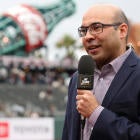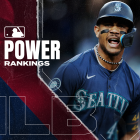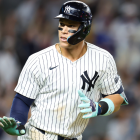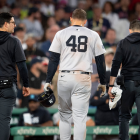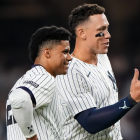The San Francisco Giants entered Monday with a 3-7 record, tied for last place in the National League West. It's early, and almost anything can happen over the course of baseball's regular season, but the Giants appear en route to justifying the low expectations placed upon them entering the year.
It might be surprising to learn, then, that the Giants have made a pair of prospect-for-veteran trades in the past week. Last Tuesday, they acquired Kevin Pillar from the Toronto Blue Jays as part of a four-player swap. On Monday, they nabbed Tyler Austin from the Minnesota Twins:
OFFICIAL: #SFGiants have acquired first baseman/outfielder Tyler Austin from the Minnesota Twins in exchange for minor league outfielder Malique Ziegler. Connor Joe has been designated for assignment.
— San Francisco Giants (@SFGiants) April 8, 2019
Those aren't the only deals the Giants have closed over the past month, either. Since the middle of March, San Francisco has also acquired Michael Reed, Erik Kratz, Williams Jerez, Connor Joe, and Jesus Ozoria. What, precisely, are the Giants doing here? Let us explain.
This is the first year at the helm for Farhan Zaidi, the Giants president of baseball operations who had previously served with the Oakland Athletics and Los Angeles Dodgers. He inherited an expensive, top-heavy roster with limited depth and a bad farm system. Realistically, the odds of the Giants making the postseason are slim. Zaidi knows that. His recent transactions spree is just part of a longer larger value-based philosophy that he figures to continue to adhere to.
It may sound funny, since bad teams are supposed to be the ones dealing big-leaguers for prospects, but both the Pillar and Austin trades are about positive arbitrage. In each case, the player the Giants landed had been squeezed off their original roster. That doesn't mean the player in question doesn't have value. To wit, Pillar has consistently graded as a two-win center fielder. Austin, for his part, has been a league-average hitter in his career. Each happens to represent an upgrade for the Giants, who entered the year with a horrendous outfield.
The other trades may not be as noteworthy -- Joe and Reed have already been designated for assignment -- but they too qualify as attempts to improve on the margins through low-risk deals that bring to San Francisco players whom Zaidi believes are undervalued or underdeveloped.
The Giants figure to lean into that strategy on the waiver-wire, too, with Zaidi taking advantage of San Francisco's high priority to pluck as many intriguing players as he can. If he unearths a Chris Taylor or a Max Muncy, great. If he doesn't, the bar is low enough that the Giants can reasonably upgrade their bench or the caliber of player available to them in the upper minors. One hit -- and "hit" doesn't have to mean All-Star player -- can justify the cost of myriad failures.
What's more is that the strategy is a sensible one whether or not the Giants compete. If they do, Zaidi is making marginal upgrades that could pay off. If they don't, he's collecting interesting lottery tickets who could impress with the opportunity granted to them following a sell-off.
Obviously this isn't the sexiest way to rebuild the Giants -- landing Bryce Harper over the winter would've qualified for that distinction -- but it is a quiet, and potentially fruitful one. Don't be surprised, then, if Zaidi continues to churn the bottom of his roster until he finds a gem.













